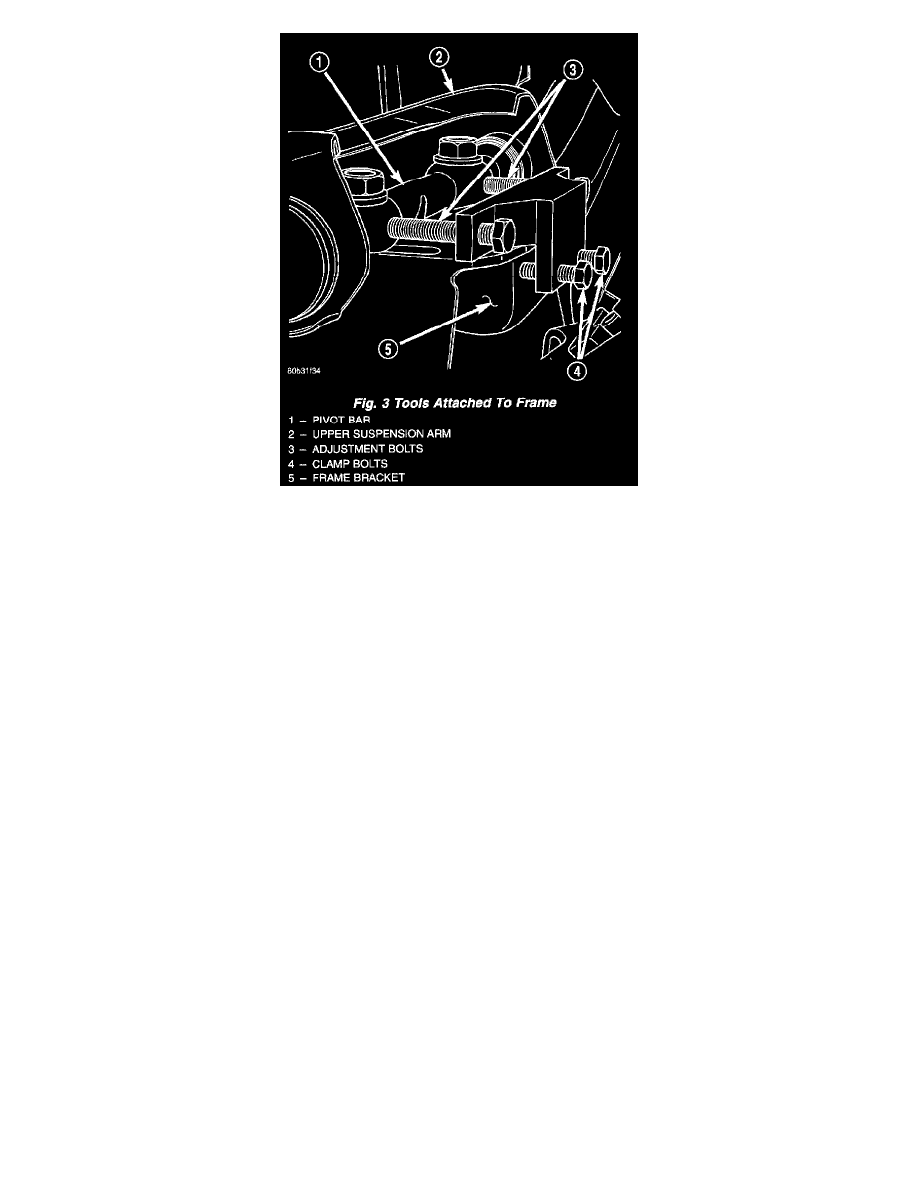RAM 2500 Van V8-5.9L VIN Z LDC (2000)

1. Clamp the tool on the upper suspension arm frame bracket. Use the two clamp bolts to attach the tool to the bracket.
2. With the adjustment tools installed, loosen both upper suspension arm bolts completely.
3. Tighten or loosen the tool adjustment bolts to move the upper suspension arm inward or outward to obtain the proper camber and caster angles.
CASTER
Move the rear position of the pivot bar in or out. This will change the caster angle significantly and camber angle only slightly. To retain camber move
the forward pivot very slightly in the opposite direction.
CAUTION: To increase a positive caster, move the rear position of the pivot bar inward. Move the front of pivot bar outward until the original
camber angle is obtained.
CAMBER
Move the forward position of the pivot bar in or out. This will change the camber angle significantly and caster angle only slightly. The camber angle
should be adjusted to the service specifications. Refer to the Wheel Alignment Specifications chart.
Tighten the pivot bar bolts to 298 Nm (220 ft. lbs.).
Toe Adjustment
The wheel toe position is the final adjustment.
1. Secure the steering wheel with the front wheels in the straight-ahead position. For power steering vehicles, start the engine before straightening the
wheels.
2. Loosen the tie rod adjustment sleeve clamp bolts.
